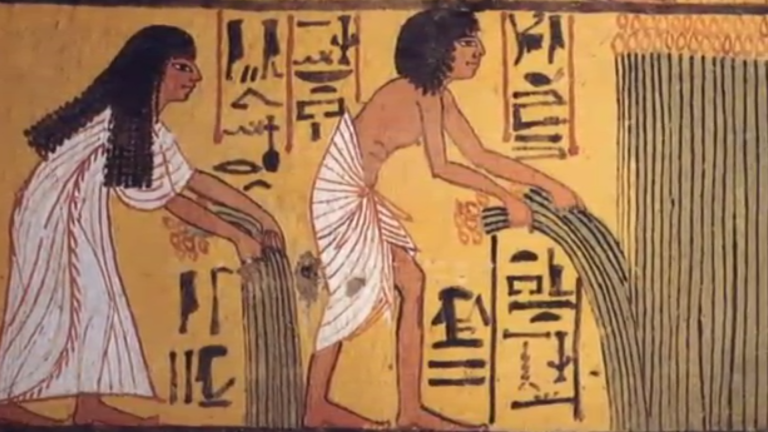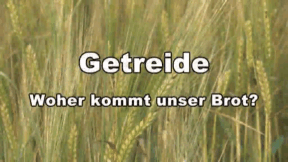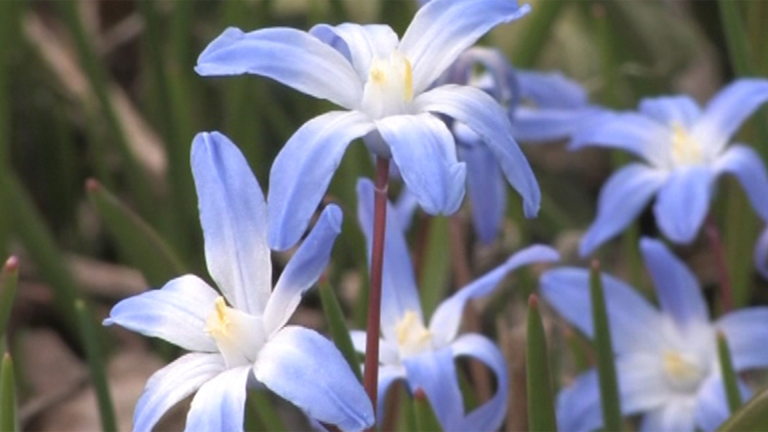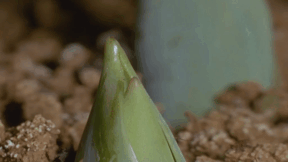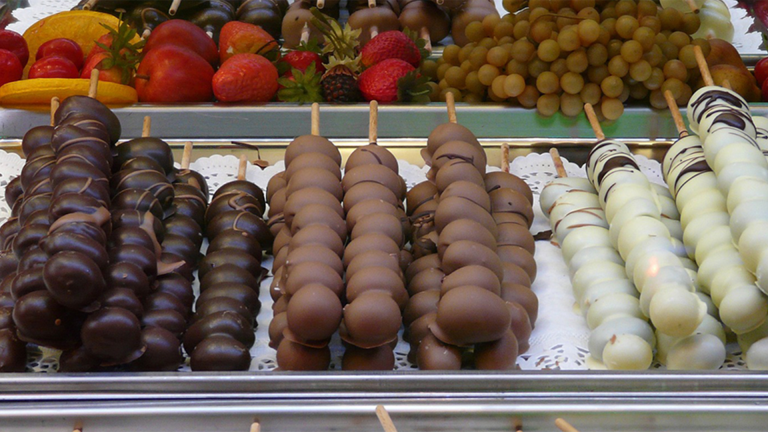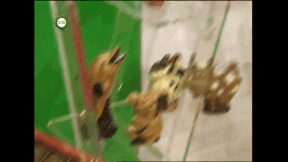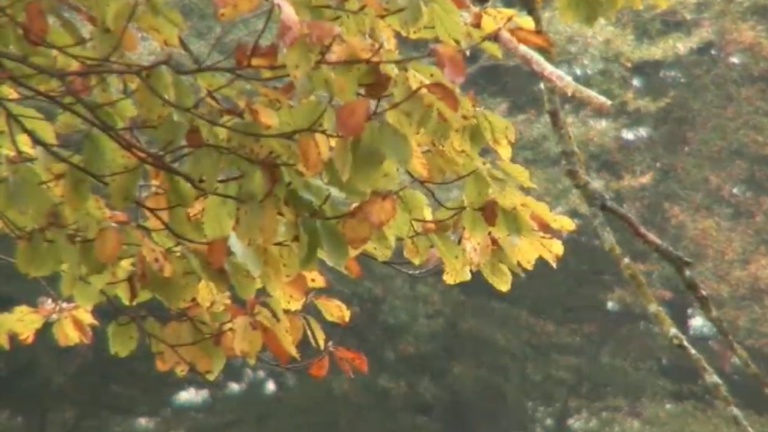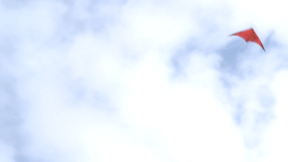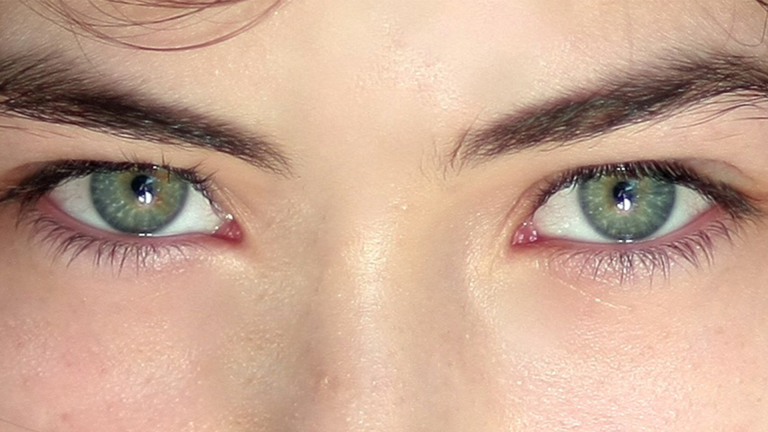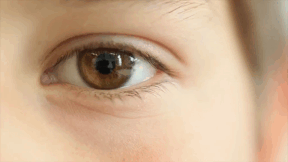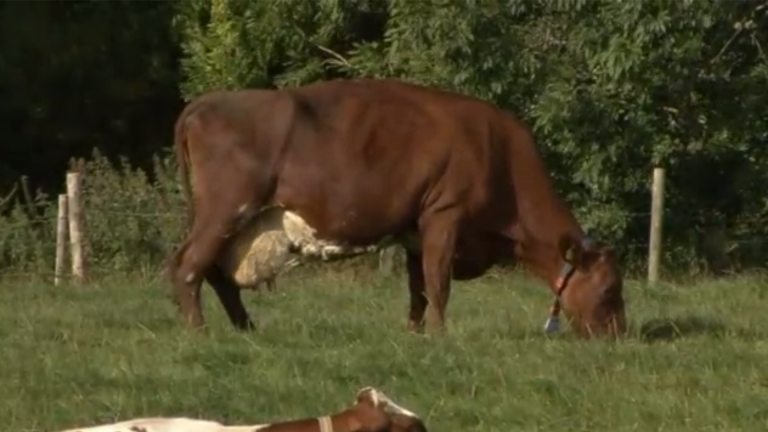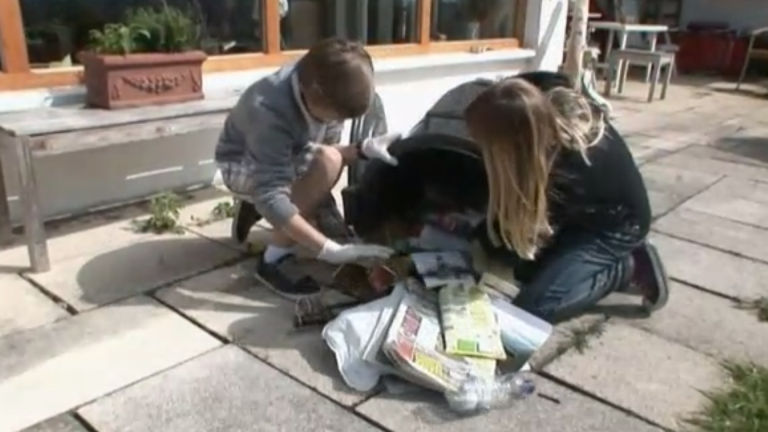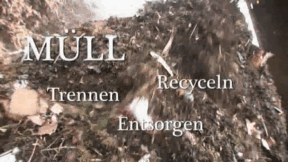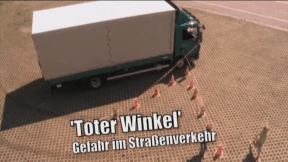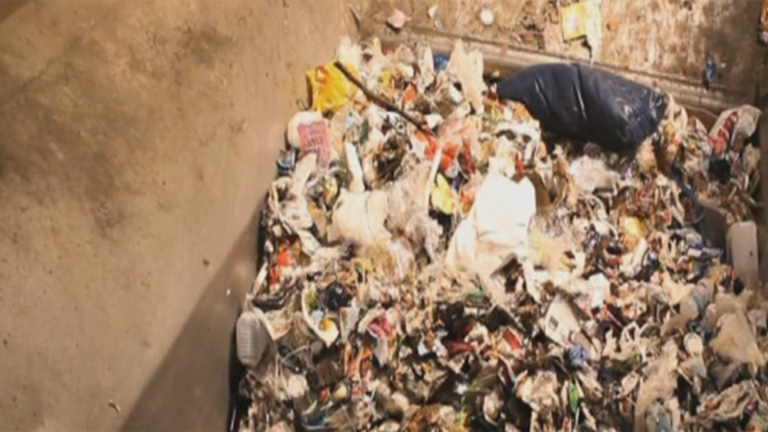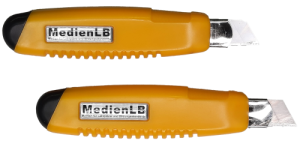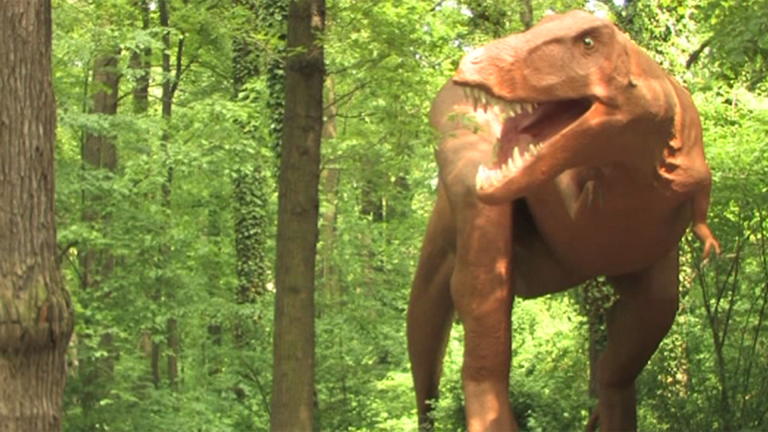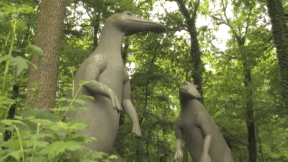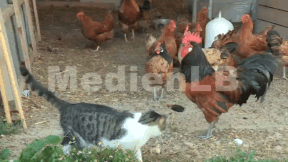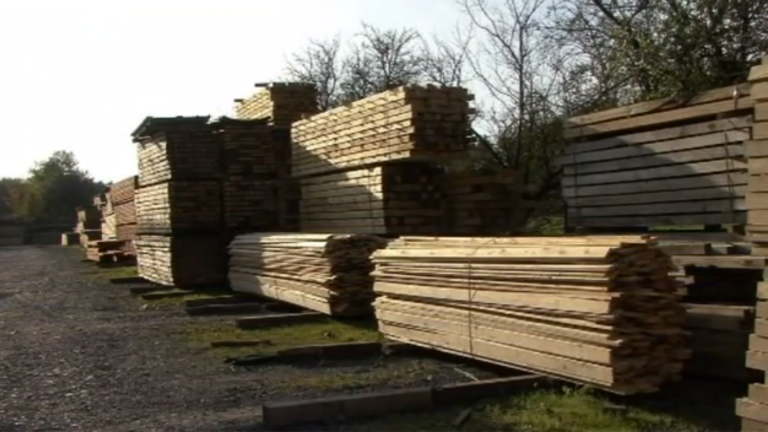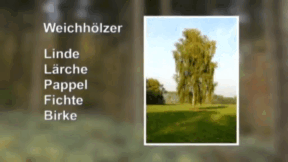Suche:
- # Artistry
- # Biology
- # Chemistry
- # Ecological
- # Economy
- # English
- # Foreign Language
- # Geography
- # German
- # Health
- # History
- # Informatik
- # Latin
- # Mathematics
- # Media Education
- # Music
- # Physics
- # Politics / Civics
- # Preschool
- # Primary School
- # Religion
- # Society
- # Sports
- # Technology
- # Training of Teachers
- # Vocational Education
Grain
The DVD offers spectacular insights into rural forms of work of former times and of today and into the work of a baker, so that pupils can easily comprehend individual work steps, too. In addition, the children gather information on the characteristics and use of the most important types of grains: rye, wheat, barley, oats and maize. The content of the DVD is excellently suited, on the one hand, to show the children that flour is an essential ingredient of baked goods and, on the other hand, to seize upon the pupils' various experiences with the staple bread. The DVD breaks down the topic "Grain" into the following main areas: baking bread, from corn to flour, types of grain and history of grain. The DVD is divided into four didactic units that can be dealt with separately via its menu structure. Moreover, the menu offers additional pictorial and diagram material. With the varied worksheets, test tasks and colour foils, the learning content of the DVD can be consolidated and the topic "Grain" enlarged upon during lessons.
Learn moreEarly Flowering Plants
During the first warmer days in late winter, the harbingers of spring show that new life is stirring. With great biodiversity and beauty the early flowering plants herald the change of season. In an easily comprehensible manner and often with stunning time-lapse images the film makes children aware of the connection existing between the sprouting of the early flowering plants so soon in the year and their extraordinarily rapid growth.
Learn moreSchokolade
Schokolade – die süße Versuchung. Kaum einer, der dieser zart schmelzenden Köstlichkeit widerstehen kann. Knapp neun Kilo des leckeren kakaohaltigen Genussmittels gönnte sich der Deutsche 2005 im Durchschnitt. Das liegt nicht nur am guten Geschmack: Schokolade hat auch eine besondere Wirkung auf Körper und Geist. Einige ihrer Inhaltsstoffe sind zum Beispiel gut gegen Bluthochdruck oder Depressionen. "Schau dich schlau!" erklärt, wie Schokolade genau wirkt. Ihren Ursprung hat Schokolade in Südamerika, genossen wurde sie dort als die Sinne erregendes Getränk. Bis zum heutigen Tag werden in Äquatorländern Kakaofrüchte per Hand geerntet, indem sie mit Macheten von den bis zu 15 Meter hohen Bäumen geschlagen werden. Mit den spanischen Eroberern kam der Kakao nach Europa, doch erst im Jahre 1848 gab es Schokolade in Form fester Tafeln. Heute reicht die gute alte Milchschokolade nicht mehr aus – immer ungewöhnlichere Kreationen kommen auf den Markt, darunter gewagte Kombinationen mit Paprika, Sellerie oder sogar Bergkäse. "Schau dich schlau!" zeigt den Weg der Kakaobohne von der Plantage bis in die Schokoladentafel. Außerdem haben sich Joey Grit Winkler und Fero Andersen auf der Internationalen Süßwarenmesse (ISM) in Köln umgeschaut und zeigen die neuesten Trends und die skurrilsten Zutaten!
Learn moreAutumn
Autumn is a transitional period in which the days grow shorter and temperatures get colder. There are lots of different fruits which serve as food for the animals on trees and bushes in the forest and the park. It is the season when people harvest fruits and vegetables in their gardens. In the film, we are shown how nature changes in autumn. The pupils learn why the leaves turn orange and yellow and eventually fall off the trees. In a way that is easy to understand they are told how plants and animals prepare for the coming winter. Various animals are introduced that are storing up winter supplies and looking for a place for hibernating. In addition, the film shows how the harvested fruit can be used for cooking or crafting. The most important festivals – the harvest festival, Halloween and Saint Martin’s festival – are explained. Besides didactic and methodical considerations, also a wealth of most varied suggestions is available in the accompanying material indicating how to work on this topic in a multifaceted and holistic way and how to rediscover it.
Learn moreEye
The eye is one of our most important sense organs. It provides direct access to the world.
Learn moreMilk
Milk is one of the oldest and, at the same time, most natural foods we know. This DVD provides comprehensive information on cow’s milk. Where does the milk come from, how are the cows best cared for, what do they eat? What breeds of cattle are there, how are the cows milked today compared to the past? What is the udder actually? What types of milk are there? What do pasteurised, ultra-heat treated, homogenised and sterilised mean? How does it get from the cow to the consumer? How is milk bottled and packed? What kinds of fresh dairy products are there? And how is butter and cheese made from milk? In the last chapter of the DVD, we take a look back into the past and show the history of milk production.
Learn moreWaste
The content of the film "Waste" is based on the specific field of experience of children – how household waste is produced and disposed of. In a vivid way, the film makes the children acquainted with the various forms of waste, how they are disposed of and how many reusable materials are contained in our household waste.
Learn moreDead Angle
Not only lorries have a dead angle. Other big vehicles such as buses or motor homes, even perfectly normal cars have a dead angle, that means an area where a driver might overlook a cyclist or pedestrian when turning corners. New technology is meant to help prevent accidents between cyclists and lorries. For example, sensors are often attached to lorries nowadays.
Learn moreMüllvermeidung
In dieser Ausgabe von "Schau dich schlau!" erfahren Sie alles, was man über Müll wissen muss. Jeder Deutsche hinterlässt jedes Jahr fast eine halbe Tonne Abfall. Wie kann man diesen gewaltigen Müllberg reduzieren? Die Wissensreporter Joey Grit Winkler und Fero Andersen wagen das spannende Experiment und wollen 24 Stunden lang keinen Müll produzieren. Joey Grit Winkler und Fero Andersen wagen ein radikales Experiment und treten in einen Müllvermeidungs-Wettstreit. Sie wollen 24 Stunden lang keinen Müll produzieren. Schnell stellt sich die Frage: Was können die beiden eigentlich noch essen? Wo können sie einkaufen? Und wie vermeiden sie es, mit Werbeprospekten und Verpackungsmaterial überschwemmt zu werden? Das Experiment zeigt, welchen Abfall wir tagtäglich produzieren und mit welchen Tricks wir unseren persönlichen Müllberg schrumpfen lassen können. In dieser Folge "Schau dich schlau!" bekommen die Zuschauer außerdem Antworten auf folgende spannende Fragen: Lohnt es sich, Flaschen nach Farben zu trennen? Landet unser sorgfältig getrennter Müll am Ende doch in der Müllverbrennungsanlage? Welche Trendsportart verbirgt sich hinter dem Begriff "Dumpster Diving", und wie kann man aus dem Datenmüll auf zerkratzten CDs und magnetisierten Festplatten wieder die ursprünglichen Informationen zurückgewinnen?
Learn moreDinosaurs
Dinosaurs lived on our Earth about 160 million years ago. There are several theories as to why they became extinct about 65 million years ago but the fascination with these creatures is still there. We can look at dinosaurs in dinosaur parks. People have reconstructed dinosaurs based on their ideas of what they might have looked like. In an age appropriate way the following questions are addressed in the film: When did dinosaurs live? What did the Earth look like at the time of the dinosaurs? How did dinosaurs live? Were dinosaurs clever? How do we know about dinosaurs? Where did the dinosaurs get their funny names from? Why did the dinosaurs become extinct? A special highlight is the chapter “Dinos Present Themselves“. A selection of dinosaurs, speaking in different voices, convey information on the various species to the children. Together with the extensive accompanying material the DVD is ideally suited for project work in the elementary sector.
Learn moreWood/Paper/Recycling
The DVD “Wood/Paper/Recycling” provides information on the treatment and processing of wood. The production of paper, an everyday item in our lives, as well as the recycling process are explained to the primary school pupils in a simplified way. The film is also excellently suited for environmental education. The following topics in the subject area of wood, paper and recycling are covered in this DVD: • Wood – a Natural Resource (appearance, properties; types of wood) • At the Sawmill (treatment and processing methods with state-of-the-art machinery) • Paper (everyday use, papermaking, types of paper, properties) • Recycling (waste paper as an important material for the recycling of used paper, recycling technique) • Environmental Protection (conservation of trees, recycling of waste paper)
Learn more



